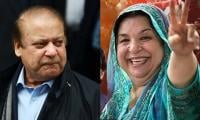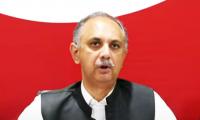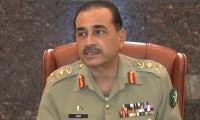The recent United Nations Security Council resolution (2254) on Syria embodies a roadmap for bringing the war-torn nation back to normality. The roadmap calls for a ‘Syrian-led’ and ‘Syrian-owned’ political transition to end the crisis. However, since the Syrian situation has drawn in major world and regional powers – either as supporters or opponents of President Assad – external factors are likely to outweigh indigenous ones in determining the outcome.
The two major fallouts of the Syrian war are the rise of extremism in the form of Daesh, and a humanitarian crisis. Neither fallout was foreseen – at least not on the scale it occurred – but both were inherent in the situation.
The conflict in Syria began nearly five years ago as part of the Arab Spring that hit several other countries in the Middle East and Africa. What made Syria a special case was the fact that it was the only country in the region where a largely Shia government presided over a Sunni majority population. That added a strong sectarian dimension to the conflict.
Both Iran and Saudi Arabia, the self-styled leaders of Shias and Sunnis across the globe, have always found it difficult to resist the temptation of getting involved in sectarian conflicts in the Muslim world. In the case of Syria, Tehran put its full weight behind Assad, whereas Riyadh went all out against his regime. Not to be left behind, Hezbollah fought on the side of the Syrian government, while Al-Qaeda and its affiliated organisations became part of the anti-Assad ‘coalition’.
The forces opposed to the Assad regime can be called a coalition only in name. Save for antagonism to the government in Damascus, they remain deeply divided. Despite the full backing of the West, Turkey and the states in the Gulf don’t present a credible alternative to Assad.
The Syrian civil war became a hot spot for Muslim militants all over the world. The chaos created by the civil war together with the sectarianism it unleashed provided a fertile ground for the rise of the Islamic State (IS), which now holds substantial territory in Syria as well as in Iraq and presents a more potent threat to world peace than Al-Qaeda ever did.
Western nations, out of their unconditional love for democracy, also find it difficult to stay away from a conflict in which a dictator is challenged. So they jumped into the Syrian fray against Assad. On the other hand, Russia has all along supported the incumbent government in Damascus. Syria thus became a theatre for both regional (Iran vs Saudi Arabia) and global (Washington vs Moscow) proxy wars.
The explosive situation in Syria has caused one of the largest exoduses of refugees since the Second World War. More than four million people have left the country, while the number of internally displaced persons is stated to be 7.6 million. A substantial number of the refugees went to Europe; which in the wake of the recent terrorist attacks in Paris Europe is wary of them now. A March 2015 UN report puts the total economic loss since the onset of the conflict at $202 billion. Four out of every five Syrians are stated to be living in poverty. The war has left the country’s education and health systems in a shambles.
With the Assad regime holding its own with the support of Moscow and Tehran, and the IS presenting a far more formidable challenge to the world at large, efforts to find a political solution to the Syrian problem got momentum. In January 2014, a conference was convened in Switzerland to implement the 2012 Geneva Communique, which called for putting in place a transitional governing body in Syria. The current UNSC resolution also endorses the Geneva Communique. The salient features of the roadmap embodied in the resolution are as follows:
The sovereignty and territorial integrity of Syria would be respected; the Syrian people would decide the future of their country; the representatives of the Syrian government and the opposition would be encouraged to initiate negotiations on a political transition process by early January 2016 with a view to establishing, within six months, ‘credible, inclusive and non-sectarian governance’; a new constitution would be drafted under which free and fair elections would be held within 18 months; and the political process would be accompanied by a ceasefire, whose modalities would be worked out in consultation with the relevant parties.
All this sounds good – but only on paper. A fundamental question that remains to be settled, and which the resolution does not address, is the fate of President Assad. Previously, the Western nations were of the view that Assad was part of the problem; therefore his removal was a sine qua non for any settlement. But the Syrian president has been a hard nut to crack. So there seems to be a change of strategy (not, though, a change of heart)
At any rate, Assad is still the legitimate president of the republic and all the references to the Syrian government in the resolution are to the one that he heads. There is no other government in Syria.
That said, the Gulf kingdoms, particularly Saudi Arabia, hate Assad and they would like to see the end of him. In the course of the political dialogue, it is likely that the opposition groups will say that in the presence of the incumbent president free and fair elections cannot be conducted. Therefore, the split over Assad may become a stumbling block in resolving the Syrian problem.
The parties on either side of the political divide in Syria have a common enemy in Daesh and they should devote all their energies and resources in putting down the menace. Already, the countries in the region have paid a heavy price by their failure to respond effectively to the rise of Daesh.
Assad is not a threat to regional or world peace, and it should be left to the Syrian people to decide his fate.
The writer is a graduate from a western European university.
Email: hussainhzaidi@gmail.com
As usual, any such deal, aiming to resuscitate ailing economy, brings to fore urge and resolve to halt further...
A representational showing sticky notes on a board. — Unsplash/FileThere are some common themes from the lives...
Whether the Daanish Schools effort has been able to live up to its principles or not may be debatable
According to the federal government, last year 653,100 people experienced homelessness on a single night in America
Another advantage for Pakistan is the enhanced teledensity and internet penetration
Both media spheres need to dovetail in amplifying the urgency of addressing climate change at the local, national, and...







